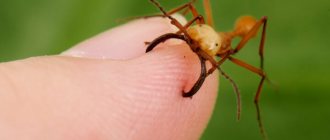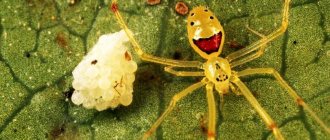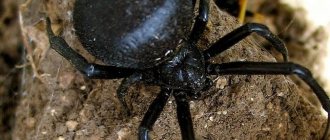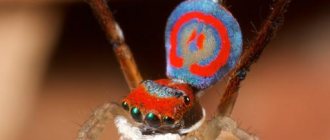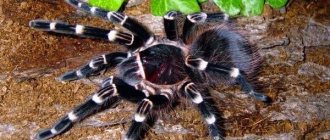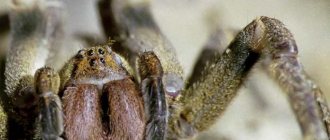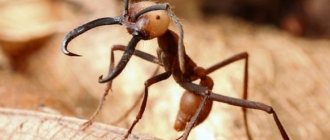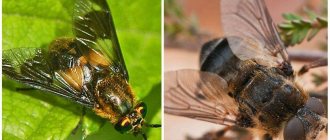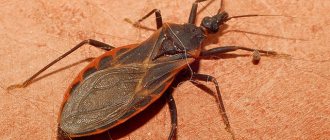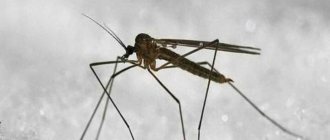Any spider has a pair of fairly powerful poisonous fangs that inject toxin into the body of the victim. This is not just poison, but a digestive juice that turns prey tissue into a liquid pulp, which the spider later sucks out of the chitinous shell. There are approximately 42 thousand species of these arthropods in the world, but only a tiny fraction of them are dangerous to humans. As a rule, spiders are simply too small and not aggressive, and are not capable of biting through human skin. Sometimes some species bite people, but their bites pass without any consequences. No more than a hundred people reliably died from spider bites in the last century, but nevertheless it is useful to know about the TOP most poisonous spiders.
Steppe black widow - karakurt
All black widow spiders cannot boast of enormous size, but they produce incredibly strong neurotoxins that are much stronger than the venom of the king cobra. A karakurt bite is felt immediately due to sharp pain, and after 30 minutes it spreads throughout the body. For several days a person feels dizzy, weak, vomiting, and in more severe cases, deep depression may occur with loss of clarity of consciousness. If the victim is not provided with timely assistance, he may die in about 5 days. Among steppe karakurts, only larger females are dangerous, while males themselves become their victims. Karakurt is the only truly dangerous spider for humans, whose habitat partially overlaps the territory of Ukraine and Russia (Black Sea, Azov regions); it is also found in the steppes of Kyrgyzstan and Kazakhstan.
Top 10 most dangerous snakes in the world People cannot be indifferent to snakes - watching them from a safe place causes delight, and close contact often turns into...
Big but not dangerous
The film industry has instilled in many people a fear of the tarantula species. They are relatively large in size. The body is covered with hairs, the color depends on the type of spider. They are distributed almost all over the world, living mainly in deserts and steppes. However, it is only with great reserve that they can be classified as the most dangerous. The bite is quite painful, but does not require medical intervention. Often accompanied by local swelling, which disappears within 2-3 days.
The king baboon tarantula is considered one of the most aggressive. Its habitat is Kenya, Tanzania, Uganda. The paw span of adult individuals can reach 20-23 cm. It is distinguished by a uniform bright rusty-brown color. When it feels threatened, the spider moves back and rubs its legs. At the same time, a characteristic sound is heard, warning of an attack. The South Russian or Mizgir tarantula lives on the territory of Russia. The body length (without legs) is 2.5-5 cm. The color is most often gray interspersed with black. It lives in self-dug holes up to 40 cm deep. Some sources indicate its ability to jump to a height of 10-15 cm.
Sydney funnel web spider
This spider is not only poisonous, but also very aggressive, it is ready to attack any person within its reach. He uses the protein delta-atracotoxin, which is deadly for primates, and therefore for humans, causing respiratory and nervous system paralysis. The Sydney funnel web spider lives near Sydney, but its habitat is gradually expanding. The males of this large spider are smaller than females, but are more poisonous and mobile; they are the ones who, when traveling, penetrate human homes. An antidote has long been made against its toxin, and if it is administered in time, the person will remain alive.
The most poisonous spiders in the world
There are many poisonous arachnids. The most dangerous spider in Russia is the karakurt. He lives in the south of the country. But during abnormal heat, karakurt migrates to other regions.
The venom of the great black widow is particularly dangerous. After a bite, a person experiences unbearable pain. If a special vaccine is not administered in time, death occurs.
Other poisonous, large spiders of Russia are Heiracanthium, Mizgir, Solfuga, Bagworm, Black Fathead, Argiope. The most dangerous spiders in the world are the black widow, the Chilean recluse, the katipo, the funnel-web, the Brazilian, and the crab-backed predator.
Brazilian spider
According to the Guinness Book of Records, the most poisonous spider in the world is the Brazilian arachnid. The main food of the predator is small insects. But it can also bite rodents, birds, and amphibians.
The arthropod clearly sees silhouettes and moves quickly. When an animal attacks, it raises its front legs upward. After a bite, a person develops a severe allergy, which can only be eliminated with the help of a special vaccine.
The insect is especially dangerous for people with weakened immune systems, the elderly and children.
After a Phoneutria bite, the following symptoms occur:
- strong pain;
- dyspnea;
- weakness;
- respiratory paralysis;
- impotence in men.
The Brazilian Araneae is found in South or Central America. The animal easily gets into the pockets of clothes, houses, shoes, cars or bags. But Phoneutria attacks only in self-defense.
funnel web spider
This type of large arthropod is distributed throughout the world. But more often they live in Australia.
There are more than 500 species of funnel-web spiders. Most arachnids are not dangerous. But some of them, such as the Sydney leukopachine, can be particularly poisonous. After being bitten by a predator, a child dies immediately, and an adult dies within 15 minutes.
The name arachnids comes from the peculiar funnel weaving used in the construction of the home.
Black Widow
The bite of Latrodectus mactans is fatal to humans. Moreover, the venom of females is more toxic than that of males.
There are 31 species of black widows, but not all of them are dangerous. Many representatives of the subtype crawl into people's homes, where they lay eggs. Females are especially aggressive and can attack humans.
After a black widow bite, severe muscle cramps and paralysis occur. The venom of these predators is much more deadly than the venom released by a rattlesnake.
A characteristic sign of a black widow is spots resembling an hourglass located on the black back.
Chilean hermit
Chilean poisonous spiders live in South America. Sometimes they can be found in Indiana, Nebraska, Texas, and Iowa.
This is the biggest hermit. Arachnids are brown in color. Its legs and belly are covered with short hair. The predator has 6 pairs of eyes.
The Chilean hermit bites painfully. The insect's venom paralyzes internal organs and the nervous system. The poison also provokes hemolytic anemia, which leads to renal dysfunction.
Redback spider
One of the most beautiful, large, but also poisonous arthropods is the red-backed spider. Arachnologists know where the predator lives: the homeland of the webworm is Australia.
The venom of the redback arthropod is neurotoxic. After its bite, paralysis occurs. Without timely medical care, a person dies.
The Australian widow is distinguished by a black round belly, on which there is a red longitudinal stripe.
Large red-backed arachnids love to live in cities, which is dangerous for humans. They often hide under a canopy, in a barn or basement.
Katipo
Katipo are small, poisonous spiders. Their belly is no larger than a pea.
Latrodectus katipo is black in color. The animal has light markings on the front of its abdomen and bright red stripes along the border. At the bottom of the abdomen is a red symbol resembling an hourglass.
Katipo lives in New Zealand, hiding under logs. The poisonous spider feeds mainly on beetles.
Katipo very rarely bite and do so only for self-defense.
If its poison enters the human body, the following symptoms will appear:
- abdominal cramps;
- fever;
- pain;
- weakness;
- hyperhidrosis.
Australian widow spider (redback spider)
This is one of the most famous Australian spiders and the most poisonous on the Green Continent. It can be confidently distinguished by its black round abdomen with a bright red longitudinal mark; such a spider cannot be confused with others. The worst thing is that redback spiders love to settle in urban environments, which provides humans with fairly frequent encounters with them. They hide in old barns, in woodpiles, in dry places under sheds. When they bite, they can control the dose of injected poison. In serious cases, the pain from the bite becomes prolonged, swelling spreads from the bite area, sweating, nausea, and abdominal colic appear. Children and elderly people who are bitten without assistance may even die from the bite of an Australian black widow.
Linotele fallax
This spider is called a tiger spider for its similarity in color to a mammalian predator. Its body is approximately 4 cm in length, and with its paws spread it reaches 10-12 cm. These “tigers” are found in Bolivia. They dig deep holes for themselves, entangling them with an incredibly thick web, like something out of a horror movie. Despite its terrifying appearance, linotele fallax is popular among spider lovers, and is often kept as a pet.
Brazilian wandering spider
These representatives of arthropods are not only poisonous, but also very jumping and fast. They easily find their way into pockets, bags, cars and homes, where they begin to pose a serious threat to residents of Central and South America. Almost always, their poison does not lead to human death (only 0.3% die), but even muscle paralysis followed by suffocation will seem to few people to be a minor problem. The worst thing is for men who, after being bitten by the Brazilian wandering spider, risk becoming impotent.
3.Black Widow
Found in most countries with warm and temperate climates. It is most common in North America, where it has the status of the most poisonous spider in the country. The venom of this representative of spiders is quite powerful, but not particularly lethal. Usually, out of a hundred people bitten, only about five people die. Although her poison is not as strong as that of the two previous representatives, it is quite noticeable. And upon contact with an unwary person, the black widow does not lose the opportunity to bite. By the way, the species received its name for the reason that after the act of fertilization, the female eats her partner.
Six-eyed sand spider
These archaic arthropods live in the South African deserts and western South America for so long that they date back to when these continents were a single continent. These spiders do not know webs, but they masterfully burrow into the sand, where they wait for their victims. Scientists tested the potency of Sicarus hahni venom by giving them bites on rabbits, which died within 5 hours. The toxin of this spider destroys the walls of blood vessels and red blood cells. Throughout history, there have been only two proven cases of a person being bitten by a six-eyed sand spider, but both ended tragically for the victims who died from internal hemorrhage.
Top 5 most dangerous animalsWe rather arrogantly consider ourselves kings of nature. But at the same time they are quite vulnerable to the world of wild animals. Meeting many species of animals and even…
Chinese tarantula
This species is a subspecies of tarantulas. This is a fairly large (up to 20 centimeters) spider with a characteristic appearance. So named because of its extremely aggressive behavior and tendency to destroy the nests of small birds. The venom of this spider is not particularly dangerous for adults, but it is extremely unpleasant, causing severe pain and muscle cramps, fever and headache. The bite of the Chinese tarantula can be dangerous for children, the elderly and people with allergies.
Chilean recluse spider
As is clear from the name of the species, this spider comes from South America, but during its wanderings it has already reached some US states - Nebraska, Iowa, Texas and Indiana. Among other hermits, he is one of the largest. The Spaniards once called it the “brown spider.” The bite of the Chilean recluse spider is very painful and can lead to serious consequences, including death. Its poison paralyzes the nervous system and internal organs, causing hemolytic anemia, leading to acute renal failure.
Brown Widow / Latrodectus geometricus
Brown widows are thought to have originated in Africa, but the first described specimen lived in South America. Representatives of this species settled in many parts of the planet. Populations of brown widows are found in southern California, the Caribbean, many US Gulf Coast states, as well as Japan, South Africa and Madagascar, Australia and Cyprus.
They can be found in residential buildings, garages, inside old tires and under cars, as well as among bushes and other vegetation.
The brown widow's venom is twice as strong as the black widow's. However, this species is not aggressive. Even when they bite, spiders do not inject all the venom they have. However, there were two reported cases of death from brown widow bites in Madagascar in the early 1990s.
16
Spider mouse
This predator lives in Australia and Chile. They called it that by mistake, believing that this spider, like a mouse, lives in burrows dug underground. The mouse spider is not too big - 1-3 cm. It hunts insects or other spiders. But he himself is prey for wasps, scorpions, bandicoots and labiopods. The mouse spider has a very dangerous protein toxin for humans. But, fortunately, he lives far from human habitation. In addition, like a cobra, it saves venom and prefers to bite “dry” when not hunting.
Red back
At first glance, the small spider looks very similar to a black widow. Its black color, red stripe on its back, and red-orange hourglass-like pattern on its abdomen give it its resemblance to this arthropod. However, this spider is not a black widow, since its homeland is Australia. Today, this arthropod can be found in countries such as Japan, Belgium and New Zealand.
The venom of the redback (a member of the karakurt family) is more dangerous than the venom of the rattlesnake itself. In this regard, a bite from a small spider can cause serious consequences for a person. After a toxic substance enters the bloodstream, people experience pain, muscle spasms, repeated bouts of nausea, and increased sweating. Fortunately, the main food for this spider is small insects, and sometimes even lizards. This dangerous little guy does not look out for people, and therefore such meetings occur very rarely.
Horrible in person
But almost cute on the inside. All tarantulas are poisonous, but their venom is low-toxic and the bite of these spiders is not dangerous to humans. Unless the victim has an allergic reaction to spider venom. But in this case, the size of the spider is not so important.
If you arrange spiders in descending order, you will get something like this rating:
- Theraphosa blondi (Goliath species).
- Heteropoda maxima (species of Heteropoda maxima).
- Acanthoscurria (genus of spiders Acanthoscurria).
- Nhandu coloratovillosus (Coloratovillosus species).
- Nhandu tripepii (Nandu tripepii species).
- Brachypelma smithi (Species of Brachypelma smithi).
- Lampropelma nigerrimum (Lampropelma nigerrimum species).
- Lampropelma nigerrimum arboricola (species Lampropelma nigerrimum arboricola).
- Aphonopelma seemanni (species of Aphonopelma zemanni).
- Avicularia purpurea (Species of Avicularia purpura).
Goliath
The female's body grows up to 10 cm. Males are smaller - 8.5 cm. The paw span can be 28 cm. The color is dark brown. The body is completely covered with short reddish-brown bristles. Lives in the tropical zone of South America.
The most terrible spiders
Heteropoda maxima
It rivals Goliath in size, although the female’s body length is only 4.6 cm, the male’s is 3 cm. But the limb span is 25-30 cm. The species was recently discovered in Laos. The color of spiders is brownish-yellow. There are no gender differences in color. Presumably the species lives in caves. The toxicity level of the venom and the strength of the bite are unknown. But this tarantula looks really creepy. Especially because of the large chelicerae.
Acantoscuria
This is a genus of large spiders. The paw span of the smallest species is 12 cm. The largest is 22 cm. The color is dark brown with a light border along the cephalothorax and light stripes on the paws. Outwardly it resembles the South Russian tarantula, but has a more attractive appearance.
Nervous character. If disturbed, it may bite. Considering the easily excitable nervous system of arthropods and their number in tarantula lovers, the venom of representatives of this genus is low-toxic.
Rhea coloratovillosus
The body and paws of the animal are covered with thick and long reddish bristles. The length of the female is up to 9 cm. The paw span is up to 18 cm. A native of Brazil. Stubble that easily falls out poses a danger to humans.
Rhea thriperia
A very fluffy arthropod whose pink or red bristles perform a protective function. Therefore, the spider itself does not exchange bites and is valued for its docile disposition. The paw span is up to 18 cm. Females grow up to 8 cm, males up to 5 cm. Country of origin is Brazil.
The most terrible spiders
Brachypelma smithy
The body dimensions are close to Goliath: up to 9 cm. The paw span is up to 17 cm. The tarantula has a very beautiful coloring: a dark background with red spots on the paws. With age, the contrast intensifies.
It uses bristles as protection, since the poison is slightly toxic. The bite is not dangerous to humans. In addition, the animal has a very calm disposition.
Lampropelma nigerrium
The body size of adult individuals is 6-8 cm. The paw span is 17-19 cm. In particularly large specimens, the leg span can be 20 cm. The color of females is jet black, males are ashen, with a striped pattern on the abdomen.
Lampropelma nigerrium arboricola
Body size up to 8 cm, paw span up to 18 cm. Females are black, males are ash-yellow. Animals are burrowers. They hunt at night.
The character is similar to its brother in its genus: an aggressive, fast arthropod with strong poison. In the absence of shelter, it is prone to bites. The poison can cause several unpleasant days for a person.
Afonopelma zemanni
The paw span is up to 14 cm. The color is black or dark brown with light stripes on the paws. They are nocturnal. Fast and active only at night. The rest of the time they prefer to sit in shelters, as they do not like sunlight.
The poison is weak. The bite is similar in strength to that of a wasp. When a person is bitten, local irritation and swelling go away on their own after 2-3 days.
The most terrible spiders
Avicularia purpura
An inhabitant of Ecuador in nature builds nests in hollows. Likes to use voids in human habitation for nesting. Completely covered with thick black bristles that glow purple-blue in the sun. Grows up to 6 cm. Leg span up to 14 cm.
Protection is provided by irritating bristles, since the venom is weak and the bite is not dangerous to humans.
Although photos of scary tarantula spiders make an impression, it is not these giants that are truly dangerous, but modest little spiders. Often these spiders have an inconspicuous camouflage color.
